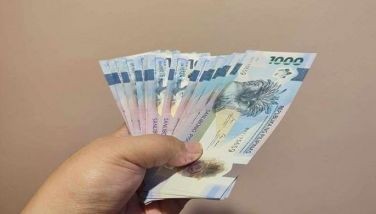ANZ Bank sees Philippine growth at 6.1% this year
MANILA, Philippines - Australia and New Zealand (ANZ) Bank sees the country’s gross domestic product (GDP) growth at 6.1 percent this year despite election-related political noise and the ongoing global recession.
In its Philippines 2016 economic outlook, ANZ Asean economist Eugenia Victorino said the fundamental strength of the economy would enable the Philippines to post strong growth this year.
“We expect the Philippines to continue to outperform its regional peers, likely posting a GDP growth of 6.1 percent in 2016, before easing to 5.8 percent in 2017,” Victorino said.
Of all the economies in Southeast Asia, Victorino said the Philippines seem almost perfectly positioned to benefit from the global and regional backdrop that is tilting toward services.
“The economy is Asia’s most service-oriented economy and the country will find itself on a steady footing in a world of unusually weak goods trade,” she said.
ANZ Bank believes the GDP growth of the Philippine this year would be faster compared to Indonesia’s 4.8 percent, Malaysia’s 4.6 percent, Thailand’s 3.5 percent, Singapore’s 2.3 percent, and Taiwan’s two percent.
However, it would be slower compared to Vietnam’s 6.9 percent GDP growth and China’s 6.4 percent.
According to Victorino, an unusually high level of domestic demand as a percent of GDP would likely insulate the Philippines from the ongoing global trade recession.
ANZ Bank said election-related spending would support public and private consumption expenditures this year, while domestic demand would remain firm despite the slowdown in the growth of remittances from overseas Filipinos.
The country’s GDP growth accelerated to six percent in the third quarter of last year from the revised 5.8 percent in the second quarter.
However, GDP expansion averaged 5.6 percent in the first nine months of last year – below the seven percent to eight percent growth penned by economic managers .
Victorino said inflation would pick up to 2.9 percent this year and to 3.4 percent in 2017, but would still be within the two to four percent target set by the Bangko Sentral ng Pilipinas (BSP).
- Latest
- Trending




























